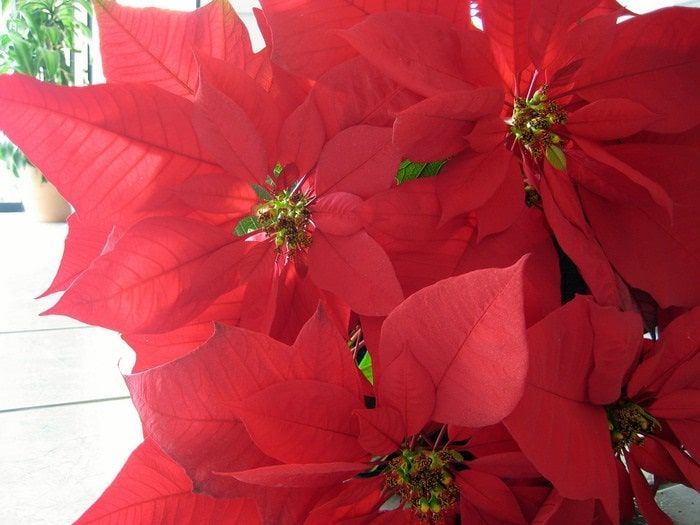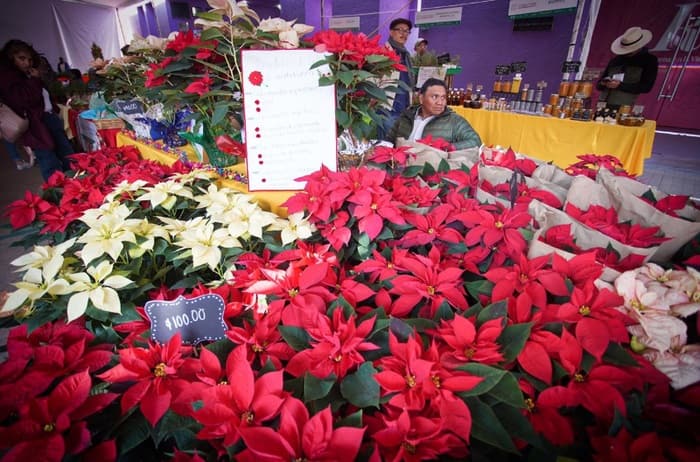The Cuetlaxóchitl flower, Mexico's Christmas gift to the world
The cuetlaxóchitl flower is an essential ornament for homes, offices, stores and public spaces in December parties of all latitudes.

Christmas Eve or cuetlaxóchitl (a flower that withers, or leather flower, in Nahuatl) and Euphorbia pulchérrima for botanical science, stands out among the flowers domesticated by Mexico's native peoples. The Mexican shrub that produces the also known as Easter flower, grows wild in dry tropical forests of the Mexican Pacific, from Sinaloa to Chiapas, even to Guatemala, and its ancestral area was found in the north of Guerrero.
The wild species of cuetlaxóchitl are less branched, with narrower and less bright petaloid bracts (leaves that are considered petals) and inflorescences with fewer flowers, but Mexican flower growers have achieved new tones and varieties: red, yellow, pink, salmon, white and marbled, and some with additional leaves, and even bangs on the edges.
In the United States and Europe, it is called the Poinsettia because in 1829 the then-American Ambassador Joel Roberts Poinsett collected some specimens of this plant in Taxco, Guerrero, and sent them to the Bartram Botanical Garden, where they were grown and exhibited. Later, Christmas Eve was introduced to Europe and spread to the rest of the world.
But cuetlaxóchitl was domesticated by the ancient Mexican population who found medicinal properties in this plant. With the aerial parts and the bracts, they prepared cooking and an infusion against abortive vaginal bleeding and to regulate menstruation.
The popularity of the flower grew and became known to the rest of the world during the Colony when churches were decorated with cuetlaxóchitl during the Christmas season, a custom that reaches our days with the Christmas Eve flower becoming a cultural icon of Christmas all over the world since its image appears profusely at the end of the year printed or manufactured in diverse materials and unexpected places.
This Mexican flower is currently a must during the Christmas season in homes, offices, campgrounds, gardens, shopping centers, schools, and entertainment, to create a festive and welcoming atmosphere.
Data from the Shared Risk Trust indicate that the cultivation of the Christmas Eve flower is one of the most important in the ornamental plant sector in Mexico. At this time of the year, we can acquire cuetlaxóchitl plants from 7 centimeters high to place on desks or small spaces, and even as a Christmas gift, but we can also simply rejoice in observing bushes full of poinsettias in homes and gardens.

In Mexico, there are more than 100 varieties of Christmas Eve, and the states of Guerrero and Morelos are the ones that stand out for their commercial production, which has increased notably through greenhouse cultivation with technified irrigation, fertilization, temperature and humidity control, luminosity, growth regulators, pruning and pest and disease control, both for national consumption and for export, since very high-quality flowers are obtained
Since early November, this typical Mexican flower, Mexico's Christmas gift to the world, is available in nurseries, flea markets, and shopping malls. By acquiring it, we contribute to improving the economy of those who produce them and we beautify our environment during the holidays.




